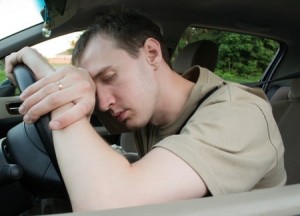 If you ever wondered about the statistics of how sleep apnea affects truckers and their wallets, you’ve come to the right place. The American Transportation Research Institute (ATRI) did a survey of 800 truck drivers with sleep apnea. The findings were interesting.
If you ever wondered about the statistics of how sleep apnea affects truckers and their wallets, you’ve come to the right place. The American Transportation Research Institute (ATRI) did a survey of 800 truck drivers with sleep apnea. The findings were interesting.
Did you know, for instance, that the average trucker with sleep apnea pays about $1,220 for treatment, which works out to about one and a half weeks of median drive pay? More than half of those surveyed were paying for some or all of the sleep apnea test costs out-of-pocket. A typical sleep apnea test involves sleeping in a dedicated facility where you’re monitored with all sorts of lines hooked up to your skin to see exactly how well (or how poorly) you sleep.
The majority of drivers without health insurance (61%) had to pay more than $1,000 out-of-pocket, while 32% of those with health insurance had to cover some portion of their sleep study with costs exceeding $1,000. Either way, a sleep study ain’t cheap!
Those with sleep apnea found themselves acquiring a CPAP machine. CPAP stands for continuous positive airway pressure. Basically, it’s a machine that pushes air into your nose or mouth at all times while you’re wearing a mask over your face so you can sleep soundly at night.
While mild sleep apnea doesn’t require treatment in order to be medically certified to drive, most truckers, none-the-less, use a CPAP machine because it helps them get better sleep than without one. Interestingly, the ATRI study found that only 1.95% of drivers failed to adhere to their CPAP machine treatment.
Also, the study found that the worse the sleep apnea was, the more positive the CPAP treatment effects. Drivers with severe sleep apnea reported increased amounts of sleep (84%), feeling better upon waking (71%) and lower blood pressure (75%), helping prove that the CPAP machine really does make a positive difference in their lives.
Finally, 64% of truck drivers who’ve had the sleep study believed the DOT guidelines for referring drivers came across as too broad and/or medical examiners weren’t necessarily following proper guidelines for referrals to sleep studies.
